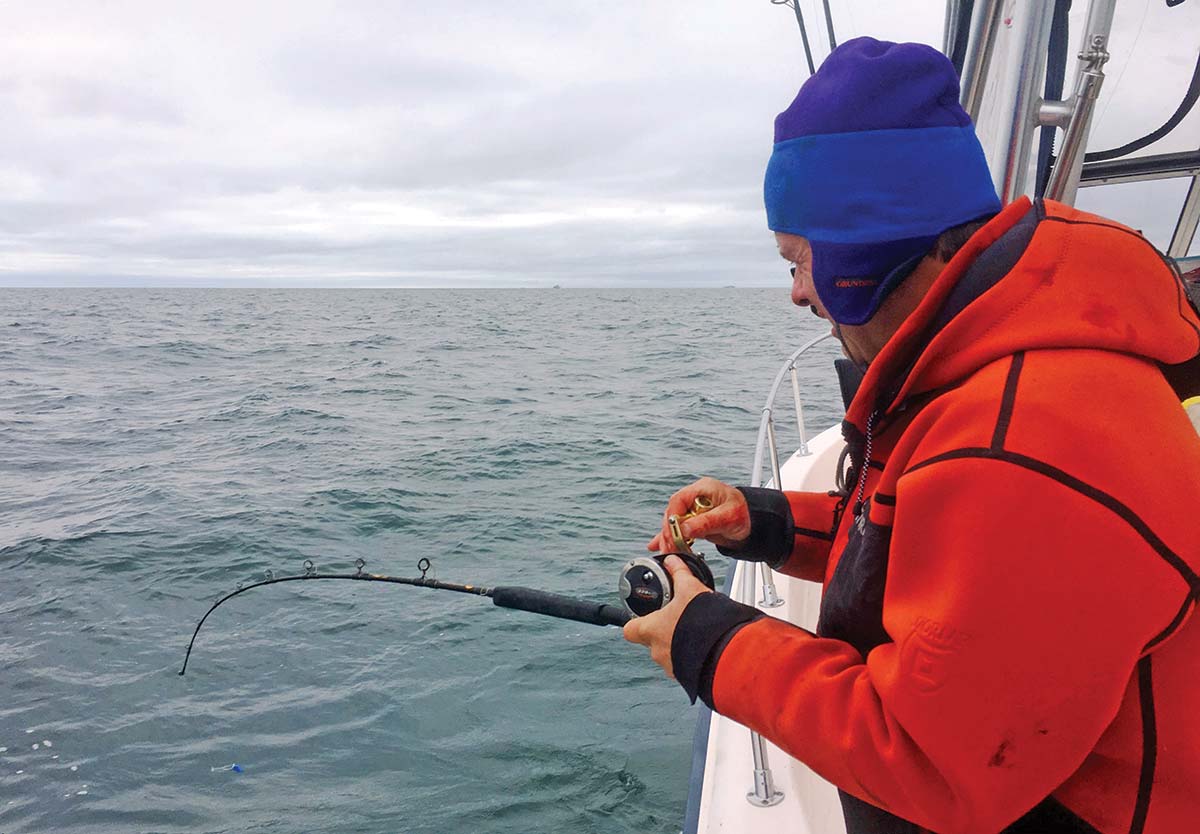
Sinker bouncing and jigging for deepwater species are among the few options available from November through April, but well worth the effort.
One of the staples that supports our need for rod-bending action in November and beyond into the cold, dark winter months is the deepwater wreck and structure fishing that is available to Northeast and Mid-Atlantic anglers essentially 24/7/365, weather permitting. For anglers whose travels seldom take them beyond the bays, inlets, nearshore wrecks and inshore artificial reefs, venturing to “deepwater” might be heading out to 100-foot depths, it’s all relative. For the context of this article, we’ll define deepwater as any wreck, sea mount, rock pile or other underwater structure that’s in 25 fathoms (150 feet) or greater, which is a 15 to 30-mile run from most Mid-Atlantic, Jersey, Long Island and New England ports. We’ll put the practical lower limit of our deepwater wreck fishing efforts at 550 feet, which is just north (or west) of the continental shelf. Anything deeper than that typically requires specialized tackle like electric reels, conventional outfits with super hi-speed gearing, etc. Deep water doesn’t always have to be 40-plus miles offshore. Parts of eastern LI Sound (only a few miles from shore) are in excess of 250 feet, as are some near offshore areas just east of Boston and other parts of the Massachusetts coastline, so keep this in mind when making your travel plans.
Terminal Tackle
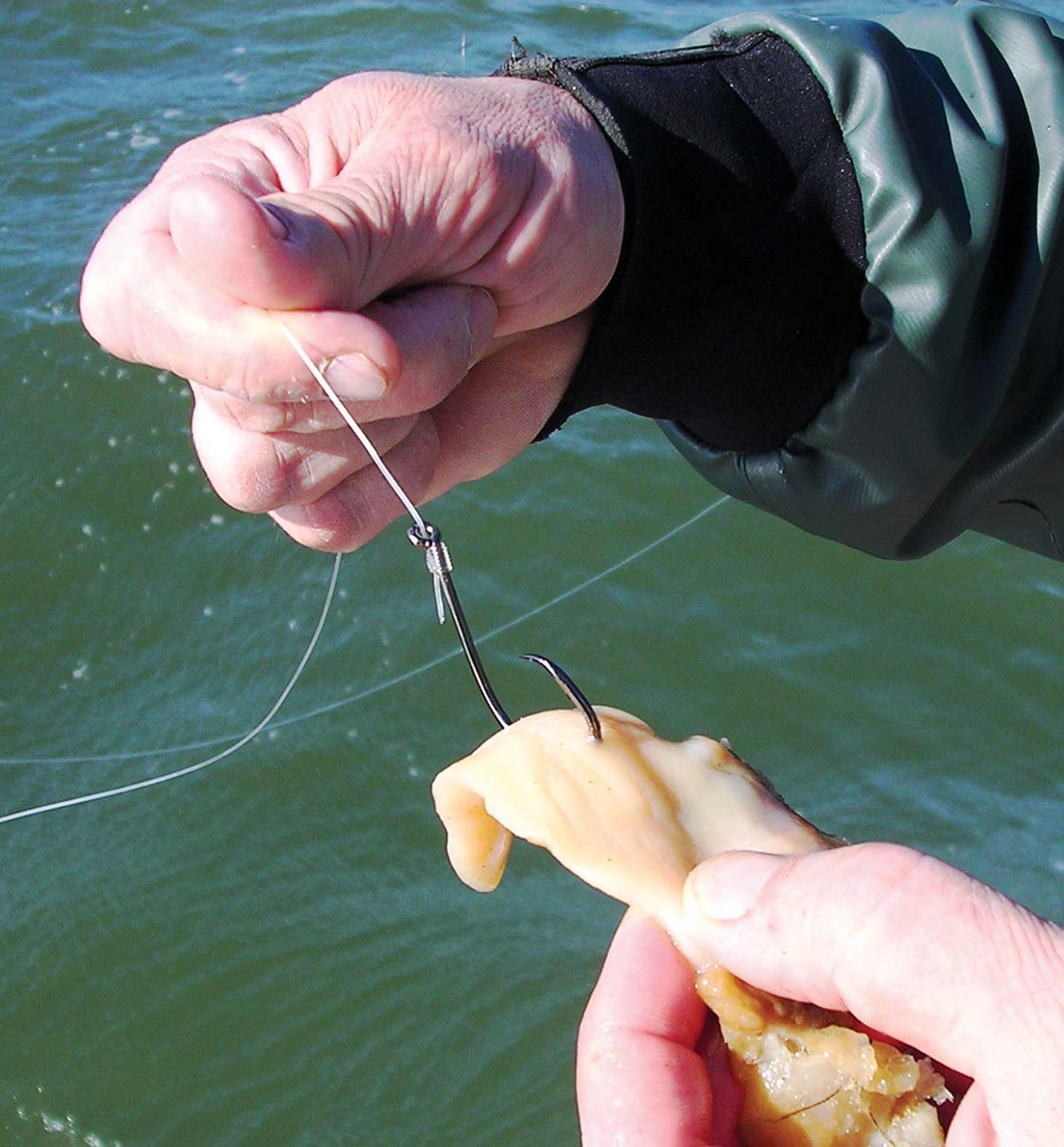 For connecting my bottom gear leaders or jigs, I’ve simplified the approach by adopting the ubiquitous stainless steel snap clips, with the addition of a small SPRO swivel to keep things from twisting up. Changing out either jigs or single/double/triple hook bait rigs is a breeze, even wearing gloves, and is a relatively foolproof connection system. When it comes to the best bait rigs, I always roll my own from remnant bulk spools of 40 and 50-lb mono and buy my hooks in bulk boxes. It’s a very economical approach and my rigs and knots are consistent and can also be adjusted to fit the needs with longer or shorter leaders, stand-offs, number/size/type of hooks, sinker loops, etc.
For connecting my bottom gear leaders or jigs, I’ve simplified the approach by adopting the ubiquitous stainless steel snap clips, with the addition of a small SPRO swivel to keep things from twisting up. Changing out either jigs or single/double/triple hook bait rigs is a breeze, even wearing gloves, and is a relatively foolproof connection system. When it comes to the best bait rigs, I always roll my own from remnant bulk spools of 40 and 50-lb mono and buy my hooks in bulk boxes. It’s a very economical approach and my rigs and knots are consistent and can also be adjusted to fit the needs with longer or shorter leaders, stand-offs, number/size/type of hooks, sinker loops, etc.
One of the nuances of deepwater rigs is terminal line twist if the popular dropper loop is your preferred connection method. While the time-proven dropper is a great way to keep the hooks from tangling around the leader or running line when sending your baits to and from the bottom, the droppers themselves can get horribly tangled and twisted when bringing smaller fish like porgies, sea bass and cunners up from the depths. This might compromise the connection when a large cod, hake, pollock or golden tilefish decides that your clam, squid or Gulp bait is edible and the result can be a lost catch and the “big one that got away.” While I am a big fan of the dropper loop for inshore wreck fishing, when heading further offshore to the 200 to 500-foot depths, I will usually employ a series of no-twist three-way swivels into the mix. The main line gets tied to one ring, the sinker connected to another, and the business hook end is tied to the middle ring via a simple improved clinch knot on a short 6 to 12-inch mono leader that has been connected to the hook via a Snell knot. I can prepare these up in advance or on the way offshore and keep them in marked Ziploc bags ready for immediate deployment. If you prefer a two-hook or three-hook rig, simply add another three-way swivel to the party and you’re ready to rock.
Tackle And Techniques
Conventional reels with either a convenient level wind mechanism or your classic open top reel frames are the usual choice of party boat, charter boat and recreational anglers for the deepwater fishery. With revolving spool gear, it’s easier to control the descent of the baits in deeper water to minimize any hook/main line tangles, plus reeling against the drag when a fish is pulling in the other direction will not put excessive twisting in the line, like it would on a spinning outfit. I prefer the open top reel spools like those from Avet, Penn, Shimano, Daiwa, Maxel and other brands that give your (gloved) hands total access and control over the spool and the line…no bird’s nest tangles, they are for amateurs! I have sold off most of my conventional bottom reels that were equipped with a top bar on the frame that limited my amount of “touch and feel” of the reel spool and its outside edges. My go-to reels for this deepwater fishery are the Maxel model 9 (spooled with 40-lb braid) and Maxel model 10 (spooled with 50-lb braid); the Maxel Hybrid 25H star drag and Rage 25H, both spooled with 30-lb braid; plus the Avet SX spooled with 30-lb braid and JX spooled with 40-lb braid. I took the Maxel Rage 25H down to Key West back in February and fished some deepwater Gulf of Mexico wrecks with it, wrestling huge amberjacks, jack crevalles and cobia up off the bottom on famed IGFA record holder Capt. RT Trosset’s Spin Drift and he was mildly amused by my light tackle antics. This little mighty mite reel hauled up dozens of 25-to-40 lb fish to the surface from down deep, so it will definitely work up north and is a featherweight reel that punches way above its weight class. When fishing on charter and private boats, I try to keep the overall length of the deepwater rods to 6-1/2 feet, and opt for the Maxel Ocean Max and Penn Rampage rods in 6-foot two-inch lengths with M/H action and rated for 40-80 or 50-100 lb braid. I do prefer a trigger grip on my conventional rods for something “extra” to grab onto when reeling them up from 200-feet or more.
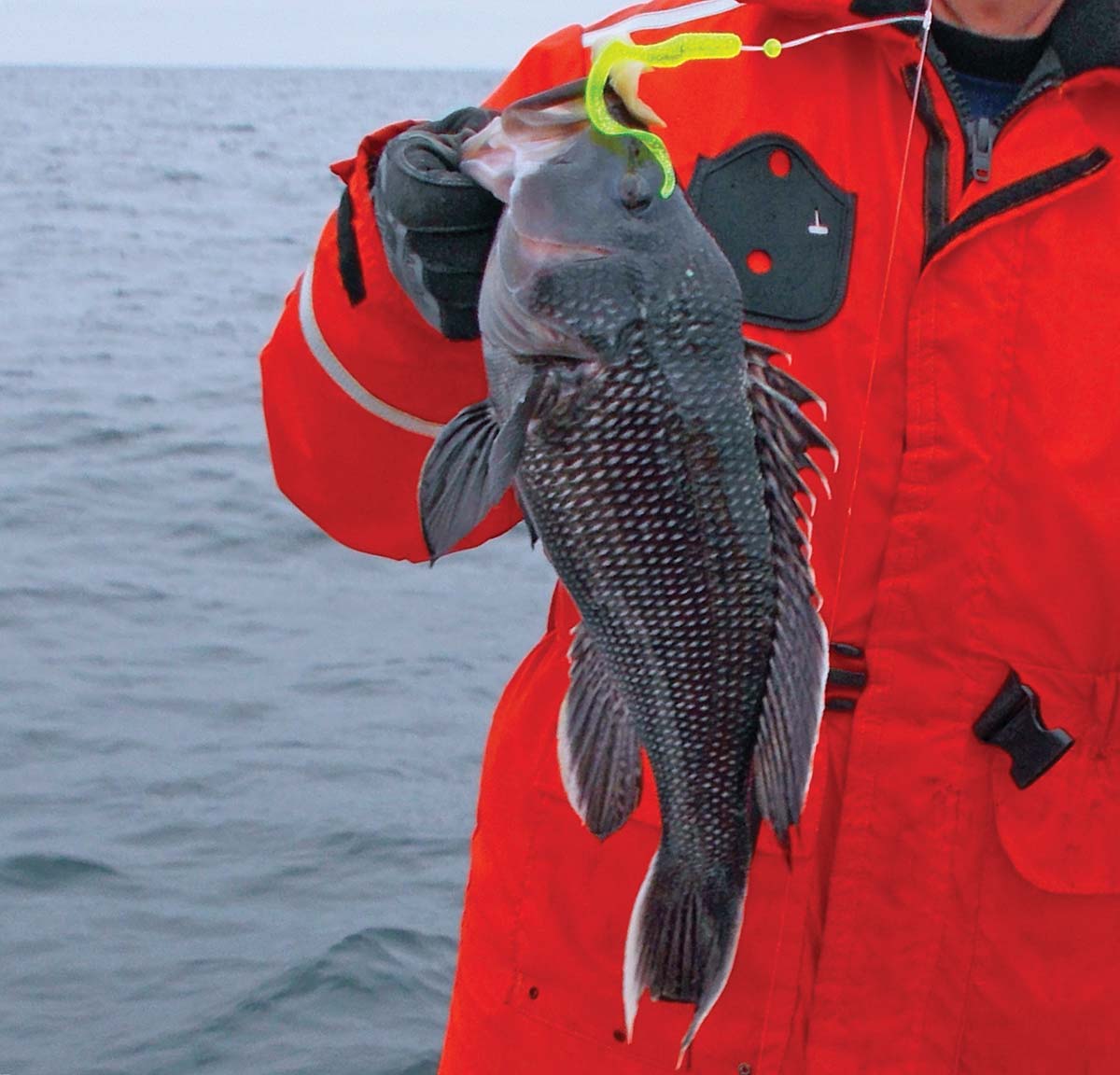 It’s different on a party boat, where you might need to toss a jig or a 16 to 20-ounce sinker out and away from the crowd, so 7-to-8 foot long rods are not uncommon. I like fast-action sticks that impart nice action to a jig, especially if yo-yoing it in place at drift or anchored, but collapse quickly into a meaty mid-section that enables you to lift your quarry out of the structure and into the mid-depths where you can fight it without fear of bottom snags. One of these rods that is a staple on party boat adventures is the Maxel OceanMax Gold model 701-4080, which is rated for 40 to 80-pound braid and jigs from 3 to 10 ounces. It will handle 16 to 20 ounces of lead with minimal problems and has a fast tip and beefy action that will make a 30 to 40-pound cod or haddock give it up quickly.
It’s different on a party boat, where you might need to toss a jig or a 16 to 20-ounce sinker out and away from the crowd, so 7-to-8 foot long rods are not uncommon. I like fast-action sticks that impart nice action to a jig, especially if yo-yoing it in place at drift or anchored, but collapse quickly into a meaty mid-section that enables you to lift your quarry out of the structure and into the mid-depths where you can fight it without fear of bottom snags. One of these rods that is a staple on party boat adventures is the Maxel OceanMax Gold model 701-4080, which is rated for 40 to 80-pound braid and jigs from 3 to 10 ounces. It will handle 16 to 20 ounces of lead with minimal problems and has a fast tip and beefy action that will make a 30 to 40-pound cod or haddock give it up quickly.
Yet another example of this type of conventional stick is Shimano’s 7-foot Terez 40-80 or 50-100 models, which are a higher-end, more expensive investment that will last for many trips to the deep. They incorporate some unique Spiral X and Hi-Power X core technologies to increase strength and reduce weight, while enhancing the overall feel of what’s happening down below. I will typically bring at least three outfits when deepwater wrecking to have some different options and a ready backup if one gets hung up on a bottom snag and I lose a few hundred feet of line off the reel, changing spool and retrieve ratio dynamics.
Sure, there will always be someone onboard who will bring a spinner to “swim against the tide” while the rest of the boat is going in the opposite direction, but spinning reels are more practical on a private boat or charter boat, versus a crowded head boat. If you are anchored up and attempting to work smallish jigs or bucktails down below, the wind/waves/current will more than likely sweep your light weight offering down tide and potentially tangle up other nearby rail riders, who will not be happy with your pursuits if/when you tangle them and intrude on their fishing time. If you are drifting over a wreck or other fish-holding structure, then the game is on and this is a snap-jigging aficionado’s paradise. You should be able to successfully deploy 1 to 2-ounce jigs in relatively deep water (150 to 225 feet) by setting up-tide of the wreck/rock pile while casting downwind of it with the jig. This insures a minimum of resistance to its fall into the depths and when it hits bottom, you should be as close to vertical as possible. Give it a few snaps while keeping it tight and stripping some line off the reel to keep the jig on/near the bottom as you drift downrange. Once you’re clear of the wreck, reel it up slowly to the surface. Many strikes from fish hovering over or on the edges of the structure will come when the echo sounder indicates that you are clear of the heavy bottom structure, but orange/yellow/green clouds can still be seen above, or off to the sides. This is when I have caught some of my largest bluefin tuna, sea bass, cod and pollock on those deepwater wrecks, so pay attention at all times and be ready for that arm-jolting strike.
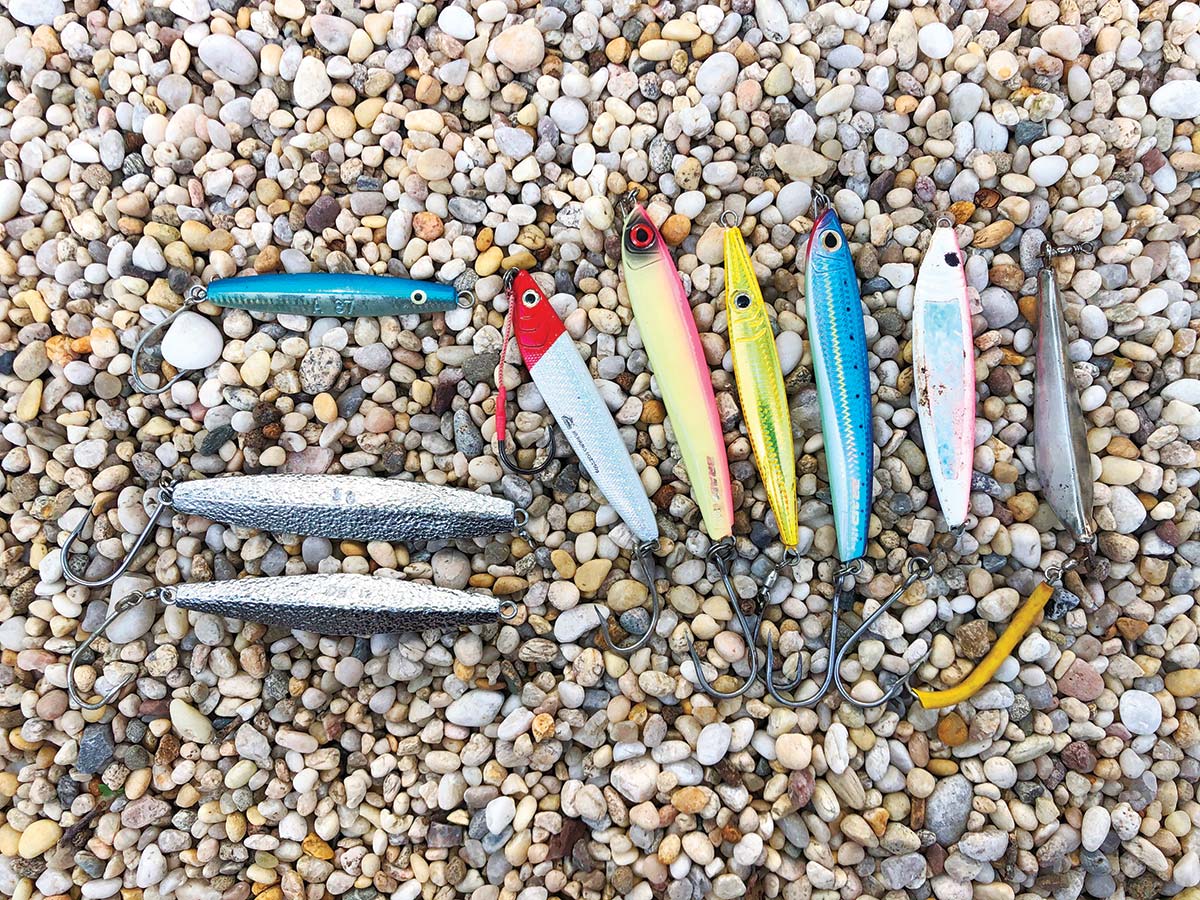
My go-to snap jigging outfits include a 6-1/2 foot Penn Battle II rod matched to a 3000-series reel spooled with either 15-pound Western Filament Domin8 or PowerPro Maxcuarto, with a 40-pound Berkley ProSpec or Hi-Seas Quattro Plus wind-on leader. My second outfit consists of a 6-1/4-foot Tsunami Sapphire XT Pro with an Okuma Azores Z4000H spinner spooled with the same brands of 20-pound superbraid, and a 50-pound mono wind-on. If I am in snap-jigging teaching mode, these two outfits work for me on 95 percent of my trips and routinely outfish my charter fares that are using bait on 2 or 3 hook terminal rigs. If the fish are there, I am typically hooked up on every drift, which seems crazy, but is true. On a recent deepwater wreck fishing adventure in mid-October to 25 fathoms, I caught more fish and a greater variety (porgies, sea bass, bluefish, blackfish, little tunny, green bonito) than anyone onboard combined, and I never used bait, only my trusty 2-ounce Braid hammered silver jig. Anyone who’s gone down this path and has tried it knows what I am talking about, with snap-jigging masters like Capt. Fred Golofaro and Capt. John Paduano leading the way for the faithful and continuing to convert unbelievers.
For the bait boys (and girls) out there, the staple offerings for this fishery include fresh salted clams, clams still in the shell, fresh squid, strips of whelk, crabs, Gulp, sand eels and whatever the first fish you catch is spitting up. For sinkers, bring along an assortment of lead ranging from 12-to-32 ounces, the size of which will be determined by your choice of superbraid line (mono is not preferred for this fishery, due to too much stretch). Hooks can range from common sproats, Virginia and O’Shaughnessy styles to bait-holders, the size of which will vary, based on the fish of the day. If you prefer jigs, hammered diamonds or three-sided Vikes from 10-to-16 ounces are a simple go-to choice, with or without tube tails and or teasers ahead of the jig. Some of the next-gen butterfly and blade jigs will also work, but you will feel a terrible pain in your wallet with each one that you hang up into the wreck and break off. The optimum weight of the jig required to get down to the bottom in a vertical hold will be determined by its size and shape, along with the prevalent wind, waves and currents for that day.
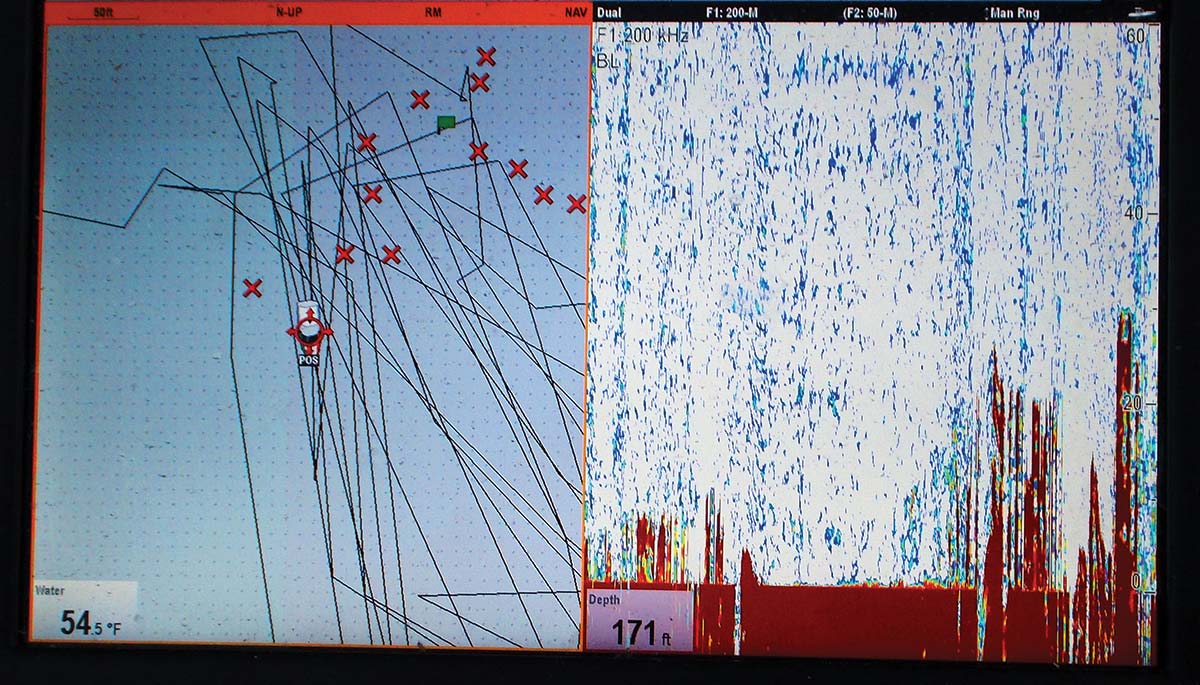
Dress For Success
The primary negatives of deepwater wreck fishing during the late fall and winter months are frequent windy and rough sea conditions, combined with extremely cold weather. If your boat is still in the water during any benign weather patterns of 40-degree air temps and moderate seas, stop what you are doing, gather up a crew and head offshore. If you are heading to deep water during the cold, dark days of winter, you must dress accordingly to enjoy a quality experience. This includes a multi-layered approach of thin, insulated garments that can wick moisture while still keeping you warm. A light pair of weatherproof bibs is a nice finishing touch, but avoid the heavy duty commercial Alaska-grade overalls that restrict your movements and make you look/feel like Gumby or the Michelin Tire Man. One of my faves is Gage’s (by Grunden) lightweight bibs in chartreuse yellow and my last pair lasted a full eight seasons before I had to ditch them for the latest model. They are half the weight of the classic stiff bibs and feature a lot more flexibility, with all of the wind-breaking and water-shedding qualities of the original.
To protect my fingers and hands from the cold and any stray hook points or fish spines, I like to wear form-fitting gloves that enable me to still tie knots and cast my conventional reels. I have a few pairs of old Nike and Under Armor lightweight motorcycle gloves that my oldest son, Lt. Chris Raguso, use to wear on his helicopter gunship that seem to do the job and these come with me on every trip offshore. Different versions of Mechanix Gloves that are available at Home Depot and other big box retailers will also do the job and are relatively inexpensive at $15 to $20 a pair. If it’s really cold outside, some sort of insulated mittens or heavy duty Gore-Tex gloves might be required, but these might restrict your fishing movements when in the cockpit or out on a party boat deck. My favorite footwear is the XTRATUF ankle boots that are 100-percent waterproof, comfortable and a breeze to take on and off. Add a pair of insulated socks to these and you are in business.
Caring For Your Catch
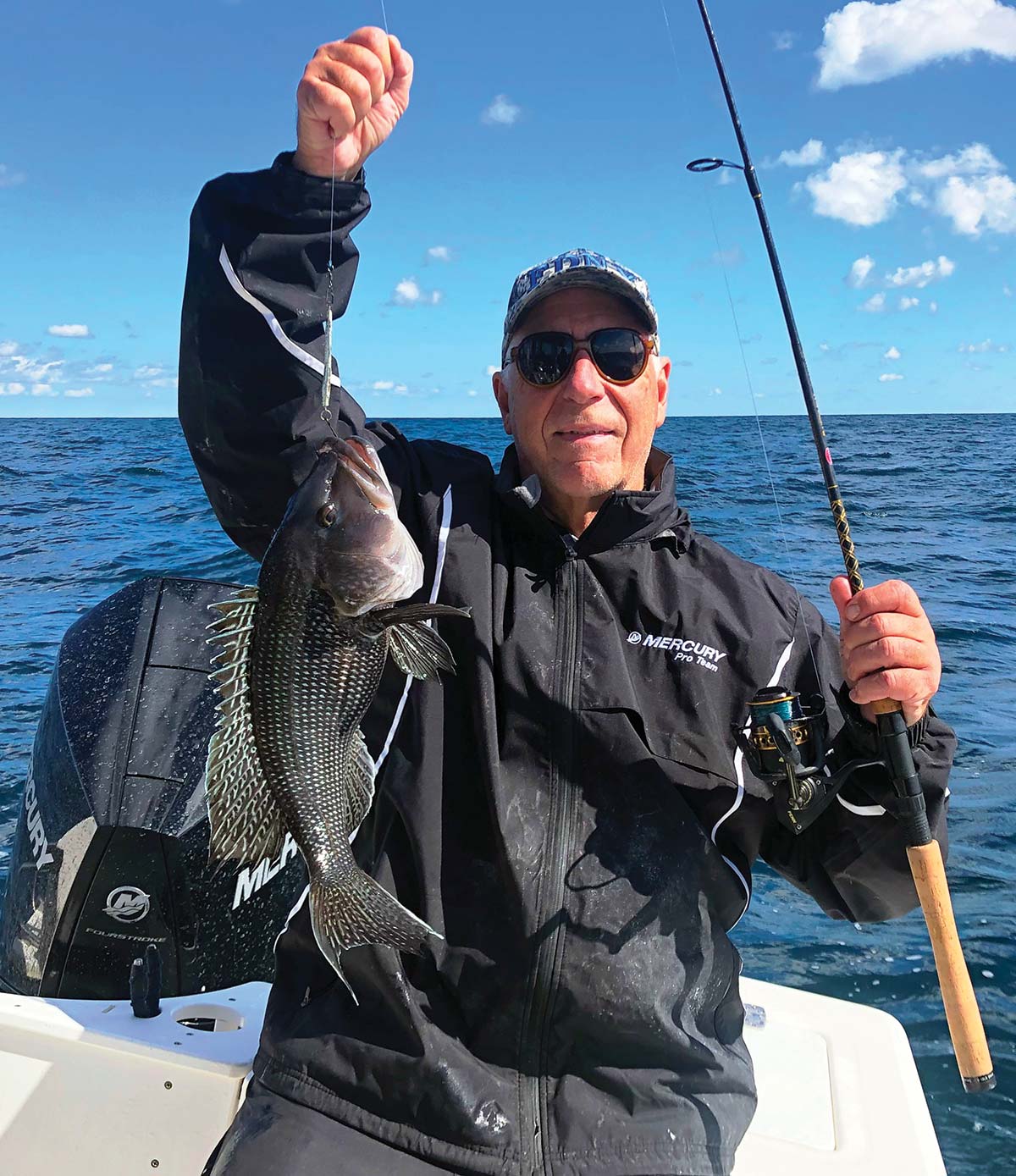 If you are heading out on a party boat, you will probably have to make reservations in advance and that’s a great time to discuss what the captain will allow you to bring onboard to chill your catch. Smaller head boats can’t accommodate bulky coolers bouncing on the deck during rough transits and taking up precious foot space when it’s time to bend the rods. This is where the portable fish bags are a huge advantage. They roll up when not in use and roll out when it’s time to store your catch of the day. Add a few bags of ice and you’re all set, plus they tie-up vertically, using minimal deck space. Cleanup is a breeze, with drain spouts to get rid of the icy slurry and neoprene construction that doesn’t stain or retain odors. Portable fish bags come in all shapes and sizes and are available at local tackle shops or online at internet fishing retailers, with prices ranging from $100 to $400 for the typical sizes that you would use for this fishery. Of course, if you are on a private boat or charter boat, these will have either built-in or ad hoc options to store and chill out your catch. Many craft feature in-cockpit, transom or under-seat insulated storage boxes that will do the job. Other options include aftermarket chill boxes like the roto-molded oversized commercial fish boxes, or those made by Yeti, Igloo, Coleman, IcyTek, Engle, Canyon, etc.
If you are heading out on a party boat, you will probably have to make reservations in advance and that’s a great time to discuss what the captain will allow you to bring onboard to chill your catch. Smaller head boats can’t accommodate bulky coolers bouncing on the deck during rough transits and taking up precious foot space when it’s time to bend the rods. This is where the portable fish bags are a huge advantage. They roll up when not in use and roll out when it’s time to store your catch of the day. Add a few bags of ice and you’re all set, plus they tie-up vertically, using minimal deck space. Cleanup is a breeze, with drain spouts to get rid of the icy slurry and neoprene construction that doesn’t stain or retain odors. Portable fish bags come in all shapes and sizes and are available at local tackle shops or online at internet fishing retailers, with prices ranging from $100 to $400 for the typical sizes that you would use for this fishery. Of course, if you are on a private boat or charter boat, these will have either built-in or ad hoc options to store and chill out your catch. Many craft feature in-cockpit, transom or under-seat insulated storage boxes that will do the job. Other options include aftermarket chill boxes like the roto-molded oversized commercial fish boxes, or those made by Yeti, Igloo, Coleman, IcyTek, Engle, Canyon, etc.
Deepwater wreck fishing isn’t for everyone, but it’s certainly an option if you get a terminal case of cabin fever over the dark days of winter and need to get out and bend the rods while stocking your refrigerator or freezer with some fresh tasty fillets. Many coastal party boats switch over to specialized 18, 24 or 36-hour offshore wreck trips for the late fall and winter months and for most of us, this is the best ticket to enjoying this fishery. There’s nothing like the feel of a 75-foot steel or aluminum hull under your boots when negotiating unfriendly sea conditions with heated rails, weather-protected heated cabins, hot beverages and bunks to catch some shuteye on the way out or back. These are not inexpensive fares, and usually require reservations, but are a fairly good value for your entertainment dollars. Deepwater wreck fishing can be practiced year-round, but it’s one of the few options for those who can stand unfriendly winter elements, short days and long nights. Choose your weather windows wisely and be safe out there.


